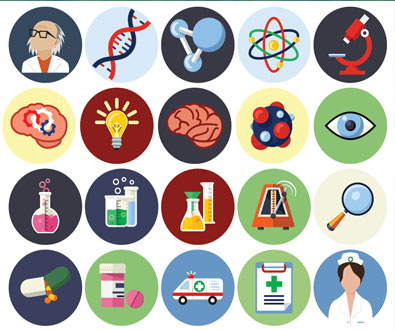
20 May 2015
Beyond the news of the $1,000 genome and the implications for improving healthcare, genomics is quickly becoming part of our everyday lives. The DNA of every living organism can be studied, and the applications are as far-ranging as identifying the genetic underpinnings of disease to finding better ways to make beer and cheese.
Here are recent research highlights from just a handful of areas impacted by next-generation sequencing (NGS).
Addiction – Researchers at the University of Colorado at Boulder Center for Health and Addiction: Neuroscience, Genes, and Environment are hoping to understand how addictions to alcohol and cannabis develop. They are looking to the epigenome for answers. The epigenome, which lies above the genome itself, is a network of chemical compounds surrounding DNA that modifies the genome without altering the DNA sequence. Through targeted methylation sequencing the researchers are identifying epigenetic signatures that correlate with brain image scans of substance abusers. By figuring out the epigenetic changes involved and understanding the mechanism behind addiction, they might be able to develop more effective therapies to turn the addiction or substance abuse “switch” off.
Agriculture – Sequencing is accelerating gene function studies and plant breeding programs to develop higher yielding, more nutritious orphan crops in Africa. As one example, the African Orphan Crops Consortium (AOCC) has a mission to curb malnutrition and the incidence of stunting in African children. Illumina sequencing and genotyping technologies enable the AOCC to essentially skip the 10–15 years of basic breeding used to select for traits. Using DNA markers, they can advance the breeding process and reduce the timeline to 5–10 years depending on the crop’s life cycle.
Bugs (and Insecticides) – Since we cannot always avoid using insecticides, it is important to understand how they work to prevent the development of insecticide resistance. Although common household and commercial insecticides are naturally derived, they are neurotoxins that target neuronal sodium channels. Current studies focus on understanding sodium channels in insects, what mutations might lead to insecticide resistance, and how insecticides are metabolized in the target and non-target species. Recently, scientists used sequencing to follow the transfer of an insecticide-resistance mutation between the Anopheles gambiae species in Ghana. Once we understand how a system works and how insecticides affect various exposed species, that knowledge can be used to design both safer and effective insecticides and understand how to use them more selectively.
Cardiology – The heart is a very complex organ and plays a major role in assuring proper circulation of blood, oxygen and nutrients. Cardiomyocytes are highly specialized cells that adapt to various physiological and pathophysiological needs of the heart. Researchers use genome sequencing to study the DNA methylomes of adult and newborn cardiomyocytes and failing hearts of mice. They observe dynamic epigenetic remodeling during development and also identify isoform switching as the heart develops. In failing hearts, adult cardiomyocytes undergo epigenetic remodeling in response to chronic stress. Sequencing has provided the first insights into how DNA methylation shapes the phenotype of specialized cells.
Forensics – While DNA evidence has been helping solve crimes and exonerate the innocent for decades, NGS is helping forensic labs improve the efficiency of their work. Currently most DNA analysis typically examines 13 to 25 locations of the genome, and samples are processed one at a time. Although this method is reliable, it’s not as efficient and does not provide as much information as it could to solve difficult cases. With NGS, forensic labs can run DNA samples 384 at a time. From each sample, they can obtain more than 200 pieces of information, enabling them to develop more complete DNA profiles. In addition to crime solving, NGS can be used in the identification of human remains from mass disasters where the deceased may otherwise be unrecognizable. NGS allows targeted analysis on low-level samples, including those that are partially degraded, to produce high-resolution identification. It can also be used to help identify unidentified or decomposed human remains, found without other identifying characteristics.
Microbiology (Beer) – Beer brewers have been using yeast for hundreds of years. These microorganisms are responsible for developing some of the most popular brews in the world by eliciting different flavors and smells that characterize those beers. However, by better understanding the genetic code and specific mechanisms that produce characteristics in yeast, beer flavors can be altered and improved. Now, as DNA-sequencing technologies become faster and more affordable, scientists are exploring and leveraging the genetic codes of yeast now more than ever.
Microbiology (Food) - Sequencing is revealing the science of cheese making down to very nucleotide. Researchers are exploring the complex relationships of microbes in different types of cheese and the interaction between viruses and bacteria, which plays a major role in maintaining the complexity of cheese starter cultures. They have found that the “community types” on cheese are reproducible independent of the geographic location, but depend more on the rind type and moisture in the cheese rinds.
Organ Transplantation – According to the Organ Procurement & Transplantation Network, on average, 21 people die each day waiting for a transplant and one donor can save eight lives. Donors that test positive for MDROs (multi-drug resistant organisms), such as Methicillin resistant Staphylococcus Aureus (MRSA), create a conundrum. The CDC reports a case study where a MRSA infected donor, despite being treated with antibiotics and cleared for MRSA infection prior to organ transplantation, was able to transmit MRSA to transplant recipients. Researchers at the CDC used Illumina sequencing technology to track the MRSA infection back to the donor. It is crucial to make sure that donors do not transmit infections during transplantation as the recipient is immunosuppressed and even infection by a small number of microbes can be fatal. Sequencing is helping to better identify antibiotics against MDROs and track donor-derived infections.
Reproductive Health – Chromosome aneuploidy (abnormal number of chromosomes) is a major cause of in vitro fertilization (IVF) failure. Most embryos with aneuploidy do not implant, and those that do often miscarry during the first trimester of pregnancy. Using preimplantation genetic screening (PGS) to selectively implant the most viable embryos can help in several ways. It can improve implantation rates; increase ongoing pregnancy rates; and enable single embryo transfers, thereby decreasing the number of high-risk multiple pregnancies. PGS was originally performed using a test (fluorescence in-situ hybridization or FISH) that did not screen all 24 chromosomes, so its efficacy and accuracy for detecting euploid embryos was limited. As new methods were developed and applied to PGS, implantation rates improved. Now, with NGS, it’s possible to screen all 24 chromosomes in as little as 12 hours for an accurate, efficient view of the chromosomal health of an embryo.
Weight Loss – Some people struggle more than others to lose weight. The fat mass and obesity-associated (FTO) gene is the first gene identified by genome-wide association studies as a strong candidate for obesity. Researchers studied the connection between the risk associated FTO gene and body fat composition in response to exercise. They identified that sedentary Caucasian men homozygous (from both parents) for the risk allele were heavier than those heterozygous (from one parent) for the risk allele. Data show that factors such as environment and diet play an equally important, if not greater role, in one’s ability to lose weight. Researchers also examined the impact of exercise on weight gain and composition of the gut microbiota. They found that exercise changes the microbes that inhabit the gut and may act to prevent weight gain. Sequencing is helping us better understand how much risk we inherit and also the role the environment plays in weight control.
Through these applications and more, Illumina’s innovative genomic solutions are helping researchers achieve groundbreaking advancements that were unimaginable just a decade ago.


